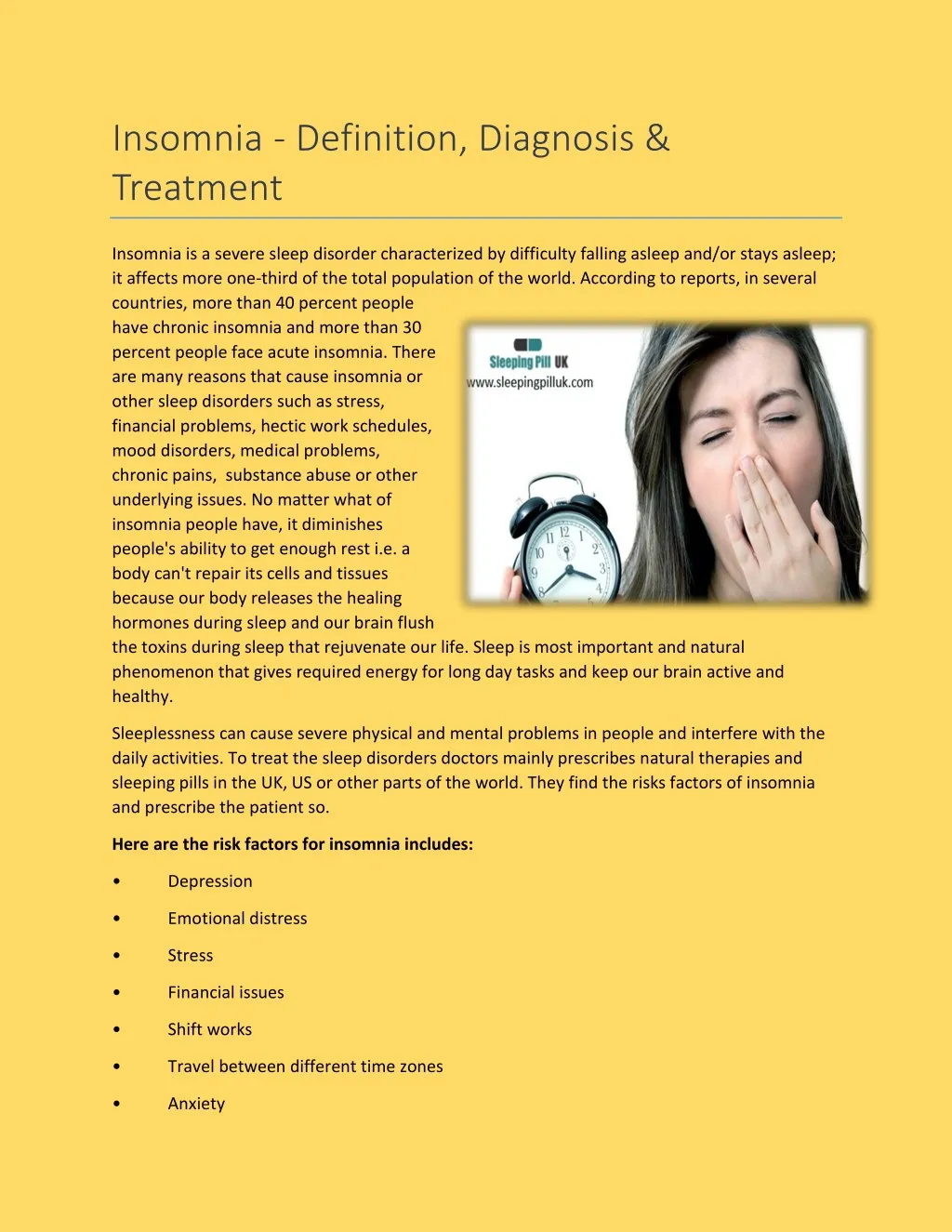

In 2005, a synthetic analogue of melatonin, ramelteon, was granted a licence for the treatment of insomnia in the USA. One such study is being conducted at present by the National Health Service Technology Assessment Programme. Melatonin is also prescribed quite often by child psychiatrists because it seems to have good tolerability, but its efficacy has not been proven in large controlled studies ( Reference Buscemi, Vandermeer and HootonBuscemi et al, 2006). However, despite its obvious appeal, clinical efficacy data in primary insomnia are very slight (see Reference Buscemi, Vandermeer and HootonBuscemi et al, 2005), although there is some evidence of efficacy in disorders such as jet lag and delayed sleep phase syndrome. There is a strong public perception of melatonin as a sleep-promoting agent, which leads many people to self-treat with supplies obtained over the internet or from other countries. Melatonin is a hormone that helps to regulate circadian rhythms. At this dose amitriptyline is probably acting mostly as a histamine H 1 receptor antagonist, although a degree of 5-HT 2 and cholinergic muscarinic antagonism may also contribute. There are no controlled studies of the hypnotic efficacy of low-dose amitriptyline but despite this it is fairly common in primary care practice to use 10 or 25 mg amitriptyline to promote sleep. Other 5-HT 2 antagonist antidepressants such as nefazodone ( Reference Hicks, Argyropoulos and RichHicks et al, 2002) and mirtazapine ( Reference Winokur, DeMartinis and McNallyWinokur et al, 2003) have been shown to reduce insomnia in depression, especially early in treatment. This effect of SSRIs on alertness can be offset by sedative antidepressants such as trazodone, probably because they block 5-HT 2 receptors which are being overstimulated by an increase in 5-HT ( Reference Kaynak, Kaynak and GozukirmiziKaynak et al, 2004). Tricyclic and some other classes of antidepressants as well as antipsychotics have long been used for the treatment of insomnia, whereas selective serotonin reuptake inhibitors (SSRIs) generally disrupt sleep early in a course of treatment. Thus rebound insomnia would be expected on the first drug-free night with drugs with short half-lives or several nights later with drugs with long half-lives. Nevertheless, withdrawal reactions with rebound insomnia are still seen in some patients, even with the newer agents, although the timing of these varies with the half-life of the drug. These long-term controlled data showing continued efficacy of a hypnotic will be reassuring to patients and their treating doctors.
Insomnia treatments trial#
In a placebo-controlled trial of the active (S) enantiomer of zopiclone (eszopiclone) efficacy was maintained over 6 months ( Reference Krystal, Walsh and LaskaKrystal et al, 2003) and there are now open-label continuation data for 12 months ( Reference Roth, Walsh and KrystalRoth et al, 2005). In clinical practice many patients are treated with hypnotics for many months or longer. The length of time that hypnotics show efficacy is less clear. Doses are usually halved in older adults (see British National Formulary ) but elderly patients do tend to get up in the night and even short-acting GABA-ergic drugs can compromise balance and cognition early in the night ( Reference Allain, tue-Ferrer and PolardAllain et al, 2005). The Z-drugs have a better pharmacokinetic profile than the older benzodiazepines ( Reference NuttNutt, 2005), but are equally efficacious ( Reference Dundar, Dodd and StroblDundar et al, 2004 ) and are the drugs of choice to avoid daytime carry-over effects. Insomnia might offer an important signal of impending illness and an opportunity for prophylactic interventions.īenzodiazepines and the Z-drugs (zolpidem and zopiclone, and to a lesser extent zaleplon) are the most commonly used hypnotics which act on the benzodiazepine receptor, with the less selective agents clomethiazole and choral hydrate having poor safety profiles. The loss of sleep may accelerate the upward mood shift, just as sleep deprivation can elevate mood in people with depression. In mania, insomnia often precedes a relapse and may be a useful warning sign of imminent mood swings. Sleep abnormalities predict poor response to cognitive–behavioural therapy (CBT) ( Reference Thase, Kupfer and BuysseThase et al, 1995) and often continue to disrupt life even when mood has improved, contributing to the risk of relapse. Insomnia in other psychiatric disorders is called secondary insomnia and is very common in depression, with up to 90% of patients with sleep disturbance. If this occurs in the absence of psychiatric disorder, it is called primary insomnia. Insomnia is the subjective experience of poor or unrefreshing sleep, usually with some objective evidence of reduced time asleep or delayed sleep onset, although often the subjective experience of suffering may appear more than expected from the degree of sleep shortening.


 0 kommentar(er)
0 kommentar(er)
